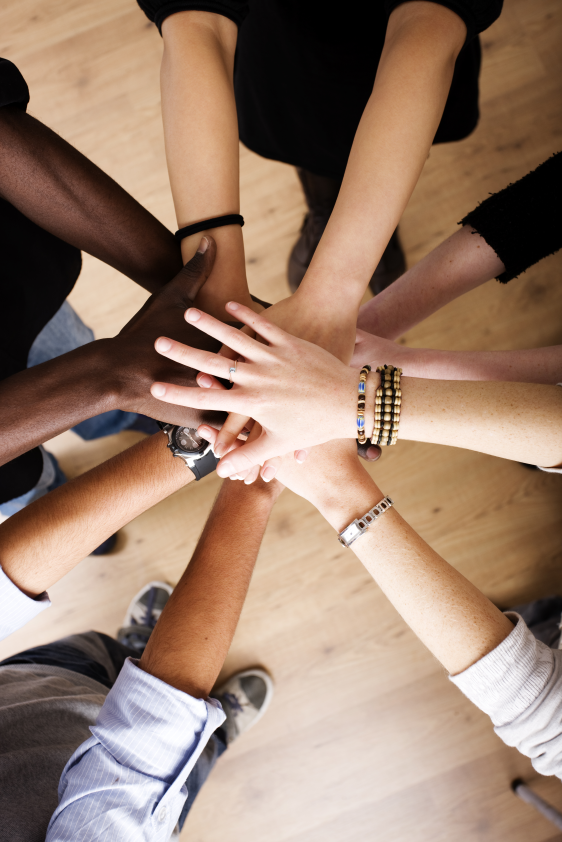Becoming an agent of social change: A guide for youth activists
by National Sexual Violence Resource Center
April is SAAM
Sexual assault, abuse, and violence may be topics that you have learned about before. These words are examples of unwanted sexual activity or contact without consent. You may already know that sexual assault happens frequently and affects people of all ages, identities, and walks of life. In fact, one in five women and one in 71 men will be raped at some point in their lives (Black et al., 2011). You may know someone in your family, group of friends, or at school who has been sexually assaulted. It’s clear that this issue is important and has an impact on all of us.
A topic like sexual violence can feel overwhelming and unsettling. It’s normal to want to play a role in creating change. No matter what the circumstances are today, we can all create positive change for the future and prevent sexual violence. Social change is the process of shifting attitudes, values, and actions to address social problems in a positive way. Anyone at any age can be an agent of social change. Being an agent of social change is an active way to create a safer, healthier future for you, your relationships, your community, and your world.
Healthy sexuality is a vision to end sexual violence
Learning about healthy sexuality and finding the information, resources, and support you need is the first step in creating positive change for the future. It may be helpful to think of healthy sexuality as the opposite of sexual violence. Healthy sexuality is a vision for what sex, relationships, and our growth can look like when positive skills, helpful information, and open communication are the standard. Healthy sexuality means having the knowledge and power to express sexuality in ways that enrich our lives. It’s about every person being able to make consensual, respectful, and informed choices. There is no room for pressure, violence, or control.
For some people, the idea of healthy sexuality matches the information and values that have been shared with them from an early age. For others, this description of sexuality is a new idea, and it can be helpful to get more information before sharing this topic with others. No matter where you find yourself on this journey there are tools to help you learn more.

Safe sex(uality): Talking about what you want and need is a great tool to use in learning more about healthy sexuality.
• Sexuality is more than sex, and healthy sexuality affects us on emotional, cultural, physical and social levels. Sexuality is a part of each person, but it doesn’t stop there. Communities and society as a whole are impacted by the ways we talk about sex.
• Think about the messages that have been shared with you about sex and sexuality. Do you think this information has been positive and helpful to you and others? What would you have liked to learn or see others learn?
• Consider unhealthy messages and behaviors you have seen or heard. Take time to recognize any negative or unhelpful information that you may need to unlearn and challenge.
Understanding what healthy sexuality looks and feels like is an important part of creating a vision for social change.
• Can you picture what your life, family, friends, school, and community would look like if everyone felt supported in working toward healthy sexuality? How would people be treated?
• What would be different in your life if people treated one another with respect and challenged unhealthy messages?
You can be an agent of change
Creating a vision for social change can inspire us to act in positive ways. There are many benefits when young people are involved as leaders in social change efforts. Involved youth gain experience and confidence, and the skills and leadership that young people develop broaden their future opportunities (Klindera & Menderweld, 2001). Your involvement and investment also strengthens the programs and outreach of organizations working to prevent sexual violence.

Here are some strategies for becoming an agent of change:
• Know your power. Your voice is valuable and influential. As a young person, you are in a key position to reach your peers with information and insight that impacts their lives. It’s important for adults and communities to learn from the voices and experiences of you and your peers.
• Engage peers and build a network. Social change takes time and teamwork. You can bring friends along, ask for help, and inspire others to get involved. You can have a positive influence by being a role model of healthy behaviors.
• Partner with supportive adults. You can also build relationships with trusted adults for support. In a healthy partnership, both adults and young people learn from and teach one another. All voices are given space and respect. Adult allies can be members of your family, neighborhood, community, school or faith group.
• Connect with your community. It’s important to discover the resources in your community. You may learn that there are already individuals and organizations in your community working to make a positive impact. Programs like your local rape crisis center are a great place to uncover opportunities to volunteer, intern, and participate.
• Seek out resources. No one has all the answers, but we don’t have to look far to find great resources. There are many helpful tools available online like this Healthy Sexuality Resource List. Think of other places where you can get help looking for information, like the library and trusted adults.
• Take a stand against oppression. Social change is about shifting negative dynamics, and it’s important to remember how issues are connected. Oppression takes place whenever one group has power over another and often includes inequality, silenced voices, and abuse of power. Oppression can be based on race, gender identity or expression, sexual orientation, abilities or disabilities, age, education or income, or other parts of people’s identities. Working toward positive social change means challenging oppression.
• Lead creatively. Social change work can build on diverse strengths, and everyone has something valuable to bring to the table. Whether you love social media or prefer creative arts, think about how your interests and skills can educate and inspire others.
• Take one step at a time. Whether you are looking to start small or reach for the stars, it’s important to take change step-by-step. Approach challenges as an opportunity to problem solve and learn. Look at what inspires you, learn from others, and work to build your network of support. As you start to see an impact, share your successes and give others the opportunity to participate.
Action Steps to Get You Started
Make a list of five or more of your unique skills, and think about how these skills are useful to you as a leader in sexual violence prevention. Your strengths and interests are valuable tools. Our confidence grows when we are aware of what we bring to the table.
Think of five or more friends you can reach out to and share information with about healthy sexuality and social change. Consider how you feel most comfortable engaging others. Do you like to be in front of the class or are you more comfortable sharing words and images with your online communities? Move forward with what feels right for you.
Practice how you would talk with others. Consider how you would start a conversation or bring up the topic of healthy sexuality can help you feel more comfortable and confident. There’s no wrong way to reach out to others. Think through how you might talk with different audiences like your friends, parents, teachers or classmates. Go with what feel natural and honors your voice.
Who are the adults in your life that support you and listen to your voice? If you can think of a few adult allies, reach out to them. If not, is there a trusted adult in your school or community you would like to involve in your activism?
Find resources in your community making a positive impact. Every community is different, and you may have to research and ask around to find community partners. Your local rape crisis center, sexual health center, or community center may have opportunities for you to be involved in projects that promote healthy sexuality or public awareness about sexual violence. Contact them and ask them how you can get involved.
Connect with tools for support. As you begin to find opportunities to promote social change, it’s important to know there are always resources and support to move you forward. There are many sources for great information and free materials that come from organizations like the National Sexual Violence Resource Center. Recognize your needs, do research, and use tools to get connected to resources.
Becoming an agent of change is about taking small, sustainable steps to positively influence the world around you. Although it may seem complicated at first glance, remember you can use these simple steps and tools and support from peers and adult allies to move forward. Every person has a role in preventing sexual violence. What role will you play?
This article, originally written by Laura Palumbo, was shared with permission from NSVRC.
Resources
Black, M. C., Basile, K. C., Breiding, M. J., Smith, S. G., Walters, M. L., Merrick, M. T., … Stevens, M. R. (2011). The National Intimate Partner And Sexual Violence Survey: 2010 summary report. Retrieved from the U.S. Department of Health and Human Services, Centers for Disease Control and Prevention, National Center for Injury Prevention and Control: http://www.cdc.gov/ViolencePrevention/pdf/NISVS_Report2010-a.pdf
Klindera, K., & Menderweld, J. (2001). Youth involvement in prevention programming. Retrieved from Advocates for Youth: http://www.advocatesforyouth.org/storage/advfy/documents/involvement.pdf
National Sexual Violence Resource Center. (2012). It’s time … to get connected. Healthy sexuality resources. Retrieved from http://www.nsvrc.org/sites/default/files/SAAM_2012_Healthy-sexuality-resource-list.pdf
National Sexual Violence Resource Center. (2012). It’s time … to get connected. Healthy sexuality resources. Retrieved from
http://www.nsvrc.org/sites/default/files/SAAM_2012_Healthy-sexuality-resource-list.pdf
Related Reading
April is Sexual Assault Awareness Month: I Ask

1 thought on “Becoming an agent of social change: A guide for youth activists by National Sexual Violence Resource Center”